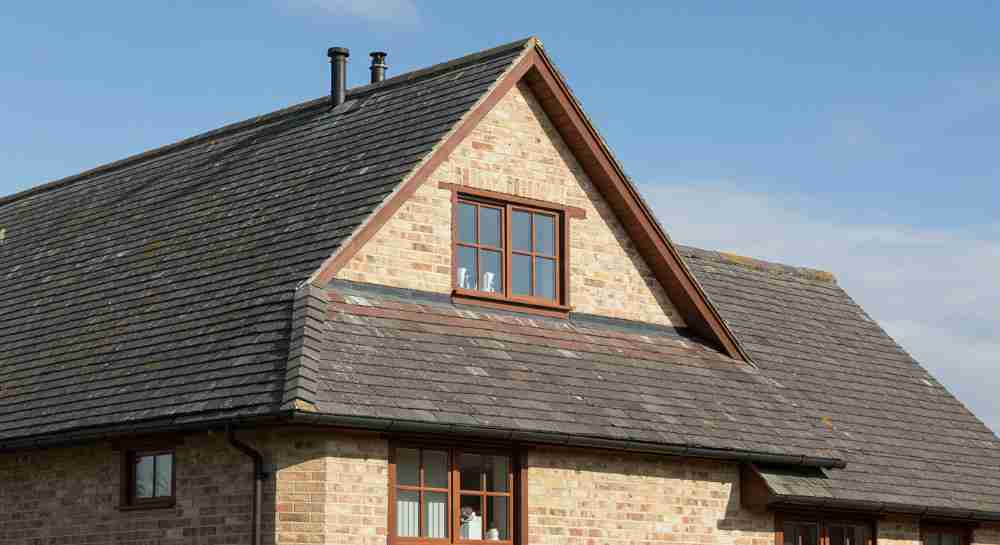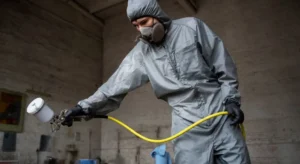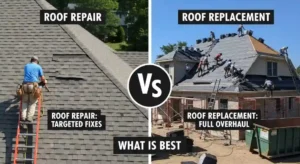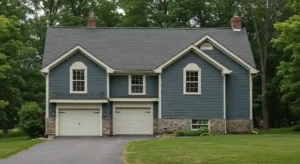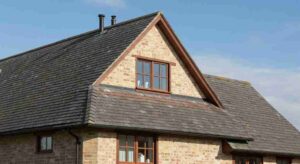Selecting the best roofing materials to apply to your roof is one of the most crucial decisions you will ever make as a homeowner. If you want any service & guidance about roofing, check our business pages for roofing services. The roof is the first line of defense of your home against the weather, and it serves triple duty when it comes to enduring severe weather. No matter if you have blistering summers or freezing winters, or both, the product you choose greatly affects the health of your home, its overall energy efficiency, and long-term expense.
In an effort to assist you with this important decision, we are going to review a variety of best-in-class high-performance roofing products, from conventional tiles to emerging cool roofs, to ensure you choose the right material for your specific property requirements. Your best metal roof material is always one that finds a balance between upfront cost, minimum maintenance, and optimal performance in all weather. For maximum energy efficiency and durability, the superior metal roof material at the top is usually the best choice. Yet many superior best roofing options bring the heavy-duty coverage and aesthetic appeal you desire.
Things to Consider When Choosing Roofing Materials
Before examining the top contenders, it is essential to understand the key factors that distinguish a decent roof from an exceptional one in harsh climates.
Energy Efficiency and Thermal Performance
One of the primary considerations for year-round comfort is thermal performance. Energy-efficient roofing is specifically designed to reduce heat transfer into your home. In warm climates, increasing solar reflectance is one of the primary measures to reflect the sun’s radiated heat and thus enhance peak roof cooling. This is done day by day by employing light-colored pigments, for example, the best-colored shingles for warm climates or special coatings. Homeowners must locate heat-reflecting shingles or materials that literally block heat from penetrating their attic area, an important factor for air conditioning savings and general energy-saving roofing.
Durability, Resistance, and Severe Weather Needs
Your roof has to endure continuous environmental stress without caving in.
Heat, UV, and Thermal Shock Resistance
In tropical and hot environments, durability further implies resistance to high levels of UV radiation and thermal shock stress (sudden heat fluctuation during day and night). Homeowners, in particular, should look for heat-resistant roofing products that do not lose their color or strength when repeatedly exposed to direct sunlight.
Resistance to Cold, Moisture, and Ice Dams
In cold climates, durability also means withstanding burial under snow loads of crushing magnitude and withstanding the weakening freeze-thaw cycle. Crisis protection products like premium ice and water shield roofing are required in these climates to avoid disaster ice dams and moisture penetration. Damage prevention to the structure below using the best quality ice and water shield is not possible under snow conditions.
Addressing Specific Climate Requirements
If your biggest issue is summer heat, you require a roof that is highest in heat intensity, with emphasis on roofing cooling technology. If inquisitive moisture and cold are your biggest concerns, prioritize materials that are highest in water resistance, plus wind and weight resistance, in order to avoid structural collapse.
Top 10 Best Roofing Materials for Different Climatic Conditions
The following are the top 10, outlined in terms of their composition and their reaction to harsh conditions.
1. Metal Roofing (Standing Seam Metal Roof & White Metal Roofs)
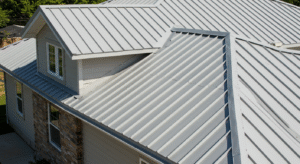
The strongest and most versatile of the new roofing materials is metal. The best metal roofing material is typically a standing seam metal roof system in which one overlapping panel seals with another airtight. It naturally reflects as much as 70% of sunlight, which makes a white or light-colored metal roof system the optimum solution for cooling houses. In cold climates, its smooth surface encourages snow to slide off immediately, minimizing the threat of building stress and ice dams.
2. Clay & Terra Cotta Roof Tiles
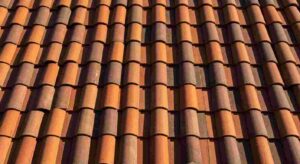
With a history of thousands of years, terra cotta and clay tile roofs are best known for being naturally resistant to heat scouring. The secret to their success is their design: the barrel-arched design provides a natural gap ventilation space for air between the tile and the roof deck, where heat can escape without conducting thermal energy into the attic. They resist heat transfer in both directions, with high thermal mass. Though long-lasting for more than a hundred years, they are heavy and crack-prone when subjected to severe impact or repeated cycles of freezing and thawing.
3. Concrete Roof Tiles
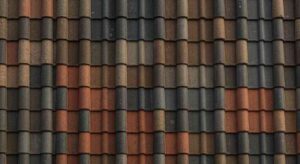
Concrete roof tiles likewise mimic the look of clay but are stronger and typically less costly. Concrete is very heavy and, as a result, contains high thermal mass content that keeps the dwelling cool during summer and warm during winter. To render them thermally more efficient, concrete tiles can also be surfaced with a high-reflectivity cooling roof paint that enhances their solar reflectivity, making them very energy-efficient in hot weather.
4. Slate Roofing (Natural & Synthetic Slate Roofing)
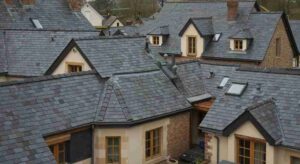
Slate roofing represents the height of luxury with a lifespan of over 100 years. Natural slate has no pores and therefore is totally waterproof, fireproof, and resistant to almost all kinds of environmental degradation. Its strength positions it perfectly to withstand heavy snowfalls and intense UV radiation. Natural slate, although heavy and costly, thus rendering repair slate roof operations specialized in character, Synthetic slate roofing duplicates the same high-end appearance and performance with the use of composite materials that are light and less costly to install.
5. Asphalt Shingles (Cool Roof Shingles)

Asphalt shingles are the most common type of roofing because of their cost and ease of installation. Newer companies now offer heat-reflecting shingles, or “cool roof shingles,” that contain highly reflective specialty granules which reflect energy from the sun before it is ever absorbed. This is a simple means of providing additional heat reflection in case of selecting the optimal color shingles for the hot weather, i.e., light gray or tan.
6. Rubber Roofing (EPDM, Flat Roofs)
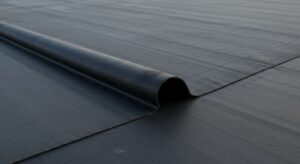
Hard, single-ply membranes like EPDM and TPO make up rubber roofing and are most often installed on flat roofs. It is also generally thought to be best for flat roofs because it is more elastic, causing it to stretch and contract without cracking in sub-freezing temperatures. To balance the heat gain due to dark-colored membrane, the use of the best flat roof covering material, i.e., white elastomeric coatings, makes it a great cool roof. Where walk-on applications like decks are present, a long-lasting membrane makes it a perfect flat roof surface to walk on.
7. Solar Roofs & Photovoltaic Systems
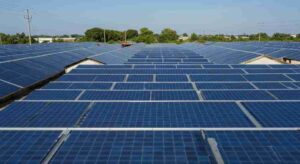
Solar Roofs and solar-integrated systems represent the pinnacle of energy-efficient roof solutions. Not only do they deliver a durable roof covering, but they also turn your roof into an active energy producer, delivering a considerable reduction in your electricity bill. The solar tiles fit perfectly into the roofline, offering an insulating shade layer that decreases heat gain and maximizes the roof’s cooling benefit, especially in sun-baked, hot climates.
8. Green Roofing Systems
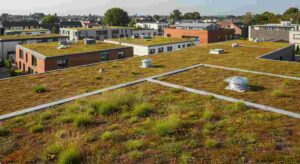
A green roof system is made up of several layers of soil, drainage, and specially constructed vegetation on a flat or low-pitched roof. The highly efficient, environmentally friendly solution takes advantage of the plant and soil layers as a natural insulator to cool the building in summer by shading and evaporation cooling, and to warm the building during winter. Urban spaces are also greatly benefit by green roofs through the removal of stormwater and diminished overall urban heat island effect.
9. White Roofing (Reflective Roofing Materials & Cool Roofs)
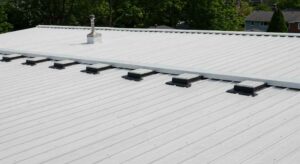
White roofing is straightforward: the light surface reflects a lot more solar radiation than the dark surface. This is the basic assumption for obtaining maximum roof cooling during hot conditions. This assumption holds for many materials, including white standing seam metal roof panels and specialty single-ply membranes. Proper utilization of reflective roof material keeps the roof surface substantially cooler. Quality cool roof coating may be applied to virtually any current surface, making it more energy efficient and giving it the best, effective cool coat for the roof.
10. Ice & Water Shield Protective Roofing Underlayment
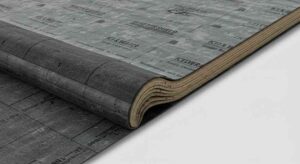
Actually, not a surfacing material in itself, the ice and water shield roof is the single most important contributor to success in cold-weather roofing. These high-end products, like Grace Ice & Water Shield or self-adhering Ice & Water Shield Grace membrane, are uniquely designed water barrier underlayment. This rubberized asphalt coating encapsulates all vulnerable areas, valleys, eaves, and vents, which receive rain-driven wind and backup water from ice dams, creating a vital, full-coverage defense barrier against water intrusion.
Smart Choice for Extreme Temperatures
What Roofing Material is Best Qualified for Hot Climates?
The ideal tropical roof has high solar reflectivity as the most important consideration. A lighter-colored metal roof or a white roof is an effective performer. Clay and concrete tiles, naturally ventilated with thermal mass, are effective performers too. The optimum strategy is to apply energy-efficient roof material and adopt a cooling roof strategy. Any material retrofitted with reflective roof products or high-performance cooling roof coatings (also referred to as cool coats) for the roof is effective.
What Roofing Material is Best for Cold Weather?
The most weatherproof material in cold weather is also the most waterproof and heavy-resistant. The finest roofing products are metal and slate, because they are durable and long-lasting. Underlayment is, however, the absolute most important cold-weather protection. Ice water shield, or roof ice and water shield, is needed to seal the roof deck and avoid water backup by ice dams.
Final Comparison: Cost vs Performance
| Material | Cost (Per Sq. Ft. Installed) | Lifespan (Years) | Energy Efficiency (Hot Climate) | Cold Climate Performance |
| Metal Roofing (Standing Seam) | $8 – $15 | 40−70 | Excellent (Cool Roof) | Excellent (Snow Shedding, Durable) |
| Clay/Terra Cotta Tiles | $10 – 25 | 50−100+ | Very Good (Natural Ventilation) | Good (Heavy, but crack-prone) |
| Concrete Roof Tiles | $8 – 15 | 30−50 | Very Good (High Thermal Mass) | Good (Durable, but heavy) |
| Slate/Synthetic Slate | $10 – 40 | 50−100+ | Good (High Thermal Emittance) | Excellent (Waterproof, Impact Resistant) |
| Asphalt Shingles (Cool Roof) | $4 – 7 | 20−30 | Fair to Good (With Heat Reflective Shingles) | Good (Affordable, Versatile) |
| Rubber Roofing (Flat) | $5 – 10 | 20−40 | Good (Especially with Best Flat Roof Coating Materials) | Excellent (Watertight, Flexible) |
| Solar Roofs/PV Systems | $20 – 50+ | 25−30 | Excellent (Energy Generation, Shade) | Very Good (Durable Structure) |
| Green Roofing | $20 – 45+ | 40−50 | Excellent (Insulation, Evaporative Cooling) | Excellent (Insulation, Stormwater) |
Conclusion
The path to the best roofing materials for hot and cold weather is the balance between your financial condition, the appearance that you desire, and the long-term functionality that you require. Whether you choose the highly resistant and thoughtful best metal roof material or the best slate roofing system supported by specially designed ice and water shield underlayment for cold climates, the right one is based on where you are and what you require. By focusing on tough, energy-saving roofs and products with a proven life span, you make your roof replacement an investment you’ll want to make that will keep your home safe for decades. If you notice any warning signs of damage on your current roof, consult a professional immediately.
FAQs
What is the most energy-efficient roofing material?
The longest-lasting hot-climate roofing material is usually a light-colored metal roof or a solar roof. Metal is an effective reflector, and solar roofs have the added advantage of providing power while keeping the roof deck shaded, which dramatically cuts cooling expenses.
Which of these materials is most energy-efficient?
Slate and terra cotta/clay tiles have the longest life, from 75 to 100 years. Their natural non-porous properties and heat characteristics give them the best UV light resistance, heat resistance, and fire resistance.
What is the best roof covering material for very snowy climates?
Metal roofing, and specifically the standing seam metal roof, is well-suited because of its high load-carrying capacity, strength, and smooth surface, which makes snow and ice slide off with ease without piling up in an unsafe way.
Can one walk upon flat roofing material?
Other than the very minimum flat roof coverings, particularly long-lasting membranes and surfaces with the finest flat roof material to walk upon or a protective coating, are intended to bear foot traffic for upkeep or deck purposes.
Are solar roofs worthwhile in warm weather?
Yes, photovoltaic systems and solar roofs are worth the money in warm climates since they take advantage of the strong sun and also have the value-add of generating power while shading the roof deck, saving on roof cooling expenses.
